
Water Safety
Water2Drink Blog > Water SafetyWorld Water Day 2015Sunday, March 22, 2015 - Posted by Water2Drink, in Water News, Water Safety
Water2Drink invites you to celebrate to World Water Day 2015! Today is an opportunity to increase water
education and awareness of global water concerns, and to take steps to ensure
your family, your community, and the worldwide population has access to safe,
clean drinking water. To celebrate #WorldWaterDay, please watch this short video
by #LoveWater2015. It is visually stimulating and full of important facts
regarding planet Earth’s fresh water supply.
Some powerful quotes from this video…
“78% of the Earth’s
surface is water, yet only .01% is fresh and drinkable.”
“We have polluted
almost 95% of all fresh water on the planet.”
“More people die every
year from waterborne illnesses than from war.”
Water2Drink.com is proud to be an exclusive Multipure International distributor. With almost
45 years of dedication to water filtration, #Multipure is a pioneer in offering
innovative filter technology that provides superior quality and performance. #Water2Drink offers and supports the entire
family of NSF-tested and certified drinking #water systems from Multipure. Each product comes with a Performance Data
Sheet, a Lifetime Warranty (on the stainless and plastic housings), a 1-Year Warranty
on all Accessories, and a 90-Day Satisfaction Guarantee.
As the #LoveWater2015 video says, “Just as water can change course, so can we.” |
 0 Comments 0 CommentsTweet |
Do You Know Your Neighbors?Friday, March 6, 2015 - Posted by Water2Drink, in Health, Water News, Water Safety
The March 5, 2015, issue of The Atlantic online magazine (theatlantic.com)
covers a consequential story about the Rice family outside of Asheville,
NC. Bob and Dot Rice bought a piece of
property in 1974, built a home there, raised children, and planned for the property
to be passed along to their two sons and their children. The home water source was a local spring a
few hundred yards behind the family cabin. According to the article, “after they moved in, the
Rices noticed the water coming out of the spring had a salty taste and smelled
musty.” They could smell a distinct #petroleum
smell coming from their well and spring, “especially when it rained. ‘I got
used to it,’ Terry Rice said. ‘We checked for bacteria. We didn’t check for
chemicals.’” In 1999, a family friend
discovered environmental contamination in the spring, along with barrels from a
long-closed factory that once bordered the property.
The contamination came from CTS Corporation, which operated a
factory plant that closed in 1986. The
company produced electronic components, and workers there used #TCE, a
colorless solvent with a sweet odor.
The article states, “Drinking or breathing high levels of TCE may cause
nervous system effects, liver and lung damage, abnormal heartbeat, coma, and
possibly death, according to the Agency for Toxic Substances and Disease Registry website. The EPA investigation found that CTS employees
were disposing of TCE and other chemicals by pouring them down the drains and
letting the chemicals leach into the ground.” A year after closing the factory, the company
sold the property to developers who had the soil at the site tested, but never had
the groundwater sampled or tested. Adding
insult to injury, the EPA “had a chance to clean up the site years ago but
didn’t. A memo from 1991 shows that federal regulators knew pollution from the
former factory threatened the surrounding community’s water and air. But the
agency failed to do more testing or even warn residents of potential dangers.”
This type of contamination can be an environmental nightmare. A wide range of chemicals can contaminate our
water, land, or air, which impacts our environment but also our health. Some pollutants resist breakdown and can
accumulate in the #foodchain, being absorbed by fish or wildlife, and then
eaten by residents. Contamination can
also impact coastal areas, waterways, surface water sources, and groundwater. It can be years or decades before the
contamination is identified, and even longer for the sites to be cleaned and
the water source becomes healthy again, if ever.
To combat environmental contamination, water consumers and
home buyers should educate themselves on the surrounding areas. What businesses
or industries are or were nearby? Were there #chemicals used in that industry? Has
there been environmental testing in the area? Even if your water source is
municipal (provided by your city or county), there are many opportunities for
water contamination to occur between a water treatment plant and your
home.
We at Water2Drink.com believe you have the power to protect
yourself and your family by using a water filtration device such as a Multipure
Drinking Water System. The family of #Multipure Drinking Water Systems are NSF-tested
and certified to reduce TCE and dozens of other chemical and organic contaminants,
including arsenic, metals and cysts. Each Multipure filter Owner’s Manual comes
with a Performance Data Sheet that outlines exactly what contaminants the
filters are certified to reduce, and to what degree. Most contaminants are reduced
more than 99 percent! |
 0 Comments 0 CommentsTweet |
Your Water CycleSaturday, February 28, 2015 - Posted by Water2Drink, in Water News, Water Safety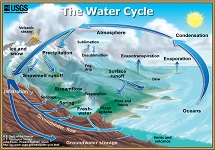
When you think about it, all water on the planet is
recycled. The water cycle that we
learned about in elementary school (evaporation; condensation; precipitation;
collection) shows that the Earth’s water is always in movement on, above, and
below Earth’s surface. Of the world’s
total water supply (about 332.5 million cubic miles), over 96% is saline, or
salt water. Of the total freshwater available
to us, over 68% is unavailable, frozen into ice and glaciers. Within the #watercycle, the fresh water
sources we use (surface and ground waters) are the only waters available to
sustain life. So how do we treat this water? Once we use water, it is
gathered by sewer or septic field, treated, and released back into the environment. Most of us know generally that water
treatment plants collect surface or ground #water, treat it to remove
contaminants, and then distribute it to our homes, fire hydrants, and water
fountains. Would you like to know a
little more about that process?
The Environmental Protection Agency (EPA) has created a
virtual tour of a water treatment plant so consumers can see step by step what
actions are taken in the treatment and delivery of drinking water. The #EPA video explains the difference
between surface and ground water, points out potential sources of #contamination,
and describes the disinfection process.
It is yet another source of information for water consumers as they
decide whether this process is enough to protect your health, or if they would
like to use a final barrier solution, such as a home-installed #Multipure
Drinking Water System. |
 0 Comments 0 CommentsTweet |
Does Your Local School Serve Toxic Water?Thursday, February 19, 2015 - Posted by Water2Drink, in Health, Water News, Products, Water Safety
California has myriad water woes, and here’s another one to
consider. Seven years ago, the local
NBC4 I-Team investigated Los Angeles area schools that had children drinking
from potentially unsafe water fountains.
The schools had old fountains and pipes made with lead that leached into
the drinking water. Today, thousands of
schoolchildren in L.A. are still drinking from these fountains. The NBC4 story states the Los Angeles Unified School District
(#LAUSD) would solve the problem by having the water lines to each fountain
flushed daily, running the water for a minimum of 30 seconds at the beginning
of each school day. The schools were to
keep logs for proof that the lines were flushed. But a 2013 audit report says one #school was
found to have falsified the logs, and an additional six schools claimed they
had followed the policy but in fact hadn’t.
Lead leaching from older pipes and fixtures is a chronic
problem in older buildings like schools, and this problem can occur in any
school district in the country. The problem is exacerbated when communities use
chloramine to disinfect their water, which accelerates #lead leaching. Chloramine is a disinfectant that is
formed by mixing chlorine with ammonia.
It is a less effective disinfectant than chlorine, but is longer lasting
and stays in the water system as it is transported to the point of use.
The solution? Carry fresh, filtered water from home, using a
Multipure Drinking Water System from Water2Drink. The #Multipure family of drinking water
systems are all tested and certified to reduce #chloramine, along with dozens
of other contaminants, metals, PCBs, and cysts.
Using a Multipure system for your drinking water costs just $.09 cents a
gallon, and provides assurance that you are using a superior water filter in
removing or reducing the highest number of contaminants. Water2Drink.com is
happy to answer your questions about choosing the best #waterfilter for your
family’s needs. |
 0 Comments 0 CommentsTweet |
What Are Your Drinking Water Standards?Friday, February 13, 2015 - Posted by Water2Drink, in Health, Water News, Water Safety
If your community water system violates drinking water
standards, do you trust them when they say “there is nothing you need to do?” Recently, the town of Wrightsville Beach, NC, experienced a
violation of the drinking water standard for #trihalomethanes. While the public notice indicates this is not
an emergency, it goes on to list the possible health risks associated with the
liver, kidneys, and central nervous system, including #cancer.
The town is working with the NC Department of Environment
and Natural Resources (NCDENR) to bring the contaminant concentration down and
into compliance, and that they “anticipate improvements within three months.” The
notice also says the public doesn’t need to boil water or take other corrective
actions. But during that three-month
period, and for potentially longer, the public is still exposed to
trihalomethanes in their drinking water.
If this happened to your water supply, are you willing to risk your
health for three months?
The only way to ensure your health and the safety of your
drinking water is to be proactive. Using
a Multipure Drinking Water System allows you to be in control of the quality of
your water source. The Multipure family
of filtration products are NSF-certified to reduce trihalomethanes, the
offending contaminant, along with dozens of other #contaminants, cysts, and
heavy metals.
Water2Drink believes the consumer should know exactly what
contaminants are reduced by using a #Multipure product. On our website, Water2Drink.com, we have
provided links on each product page to the description, features,
documentation, specifications, and “What’s in the Box.” Simply click on the Products link on our
homepage, then click the drinking water system you are researching. You will find the Performance Data Sheet
listed under the “Documentation” tab.
You can’t always trust the water source, but you can trust your
Multipure Drinking Water System.
|
 0 Comments 0 CommentsTweet |
Your Pet: Merely a Companion, or a Member of the Family?Saturday, January 31, 2015 - Posted by Water2Drink, in Health, Water Safety
For many of us, our pets are not just a companion to us. Pet owners often consider their pets to be an
actual family member. Whether
four-legged and #furry, or two-legged and feathery, we want to give our family pets
the very best lives we can. Pet industry expenditures have skyrocketed more than 200% in
the past 20 years. Pet owners spare no expense on nutritious food, high quality #veterinary care, holiday presents, and necessary pharmaceuticals or
surgeries. We devote ourselves to
ensuring our pets have a quality of life at least as high as our children or
other family members.
When providing for the health, safety and comfort of your
pet, have you considered the quality of water you are providing? Using water from the tap or from a garden
hose can expose your #pets to contaminants that pose a threat to their health. These can include arsenic, cysts, lead, PCBs,
and radon. Tap water may be treated in
your community, but your pet will ingest the chemicals used in the water
treatment process, such as chlorine and chloramine. Filling up their outdoor water bowl from the
garden hose poses an entirely new level of contamination, as garden hoses can
contain hazardous chemicals and metals such as parasites, lead, cadmium,
bromine, and bisphenol A. Also, keep in mind that unlike residential fixtures, #gardenhoses
and fittings are not regulated under the Safe Water Drinking Act. |
 0 Comments 0 CommentsTweet |
Raising Awareness of AsbestosMonday, January 5, 2015 - Posted by Water2Drink, in Health, Water Safety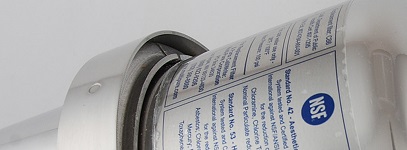
Most Americans know the dangers of asbestos, a naturally occurring
mineral. Asbestos was heavily used from the
1930’s to the 1970’s as insulation on water or steam pipes, and in floor, ceiling and
siding tiles, textured paint and soundproofing materials. Many people believe asbestos was banned from
use in the 1970’s, but a complete ban was decided against by the U.S. #Congress, allowing
numerous asbestos-containing products to remain on the market. Some of these include construction materials,
automotive products such as gaskets and brake pads, and asbestos clothing such
as gloves and welder’s blankets.
If you suspect your home contains asbestos, don’t
panic. Older homes often do contain it,
but if the material is in good condition and not deteriorating, the best
solution is to leave it alone. Material
that is crumbling, or if it has been scraped or sanded, is more likely to
create a health hazard. However, even if
your home does not contain #asbestos, it is possible that because asbestos is
still in our environment, you are at risk for exposure.
A recent blog post by Adam Lee, who writes for The #Mesothelioma
Center, describes how asbestos can be found in our tap water via its use in the
cement pipes of water distribution systems around the country. The U.S. Environmental Protection Agency
(EPA) screens for and regulates the levels of acceptable contaminant levels,
and in 1992 the EPA added asbestos to the list of #contaminants often found in
tap water.
Of course the only way to know you are not ingesting asbestos
is to filter your drinking water, using a high-quality filter that specifically
addresses asbestos as a contaminant. The
Multipure family of water filters are all tested and certified by NSF
International, the independent third party that is widely recognized around the
world for its expertise in testing and certifying consumer goods for health and
safety. All Multipure Drinking Water
Systems are NSF certified to reduce asbestos. |
 1 Comments 1 CommentsTweet |
Improving America's Drinking Water SystemsMonday, December 29, 2014 - Posted by Water2Drink, in Water News, Water Safety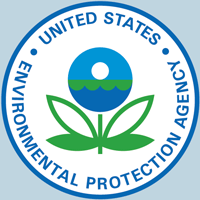
While many citizens may see the Environmental Protection
Agency (EPA) as a “watchdog” agency for American waterways, the EPA also researches
ways to improve our national drinking water systems. An EPA news release in September, 2014 announced the #EPA is
providing funding to create “Drinking Water Innovation Centers.” According to the release, “These centers will
help to develop innovative and practical solutions for challenges faced by
smaller drinking water systems, which make up the majority of public water
systems in the United States.”
Of the nation’s approximate 160,000 public water systems,
about 97% of them service fewer than 10,000 people each. These water systems
face many obstacles, such as limited funding, aging structures, and the cost of
complying with new regulations. The
newly funded centers will help bolster these systems’ capacities and
capabilities to provide #water throughout the country.
The recipients of the funding are the University of #Colorado
Boulder’s Design of Risk Reducing, Innovative Implementable Small System
Knowledge (DeRISK) Center, and the University of #Massachusetts Amherst’s Water
Innovation Network for Sustainable Small Systems (WINSSS) Center. “These organizations are leading the way in
developing cutting-edge technologies,” according to the EPA news release. |
 0 Comments 0 CommentsTweet |
How Does Your Water Taste?Friday, December 5, 2014 - Posted by Water2Drink, in Water News, Water Safety
Recently, residents of Abilene, #Texas, have noticed an
unusual taste and/or odor in their drinking water. KTXS12 News reports that, in the city’s news
release, the City of Abilene says, “the water is safe to drink.” If you noticed an unusual taste or odor in your
local drinking water, would you be reassured by that statement?
According to the news release from the City of #Abilene, the
Water Department staff is experimenting with various solutions to solve the
problem, including using “additional treatment chemicals to address the issue.” While we all have heard that Everything Is Bigger In Texas, is putting
more chemicals into the water supply a good thing for consumer health?
The Environmental Protection Agency (EPA) sets water quality
standards for consumer protection. These
standards are for a minimum of public safety, and as a consumer you need
to ask yourself if minimum EPA standards are good enough for you and your
family. It should also be noted that the
EPA does not enforce #waterquality standards for taste or odor compounds that
do not pose a health risk to the public.
The safest, easiest solution is to use a high quality
point-of-use Multipure Drinking Water System.
Water2Drink.com sells only #Multipure Drinking Water Systems. We have found that Multipure’s unique solid carbon
block filter provides a wide range of #contaminant reduction that affects both
the healthfulness and the aesthetic properties (taste and odor) of water. Multipure is one of the few companies whose
products are tested and certified by NSF International to reduce such a wide
array of drinking water contaminants.
|
 0 Comments 0 CommentsTweet |
Is Your Filtered Water Cloudy?Friday, November 21, 2014 - Posted by Water2Drink, in Health, Water News, Products, Water Safety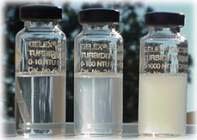
It’s that time of year again, when the snow is blowing, the
wind is howling, and your water is… cloudy? Probably the single most asked question we get in the wintertime
from our customers is, “Why is my filtered water cloudy?” Water can be cloudy for two reasons, one that
is benign and one that can be very bad.
The benign answer is:
it’s just air. If you are using a
high quality point-of-use water filter, such as a Multipure Drinking Water
System, you may be surprised to see cloudy or milky-looking water coming from your
filter. This most often occurs when the
water is cold (coming from cold ground water or being transported underground
through cold pipes). One of the
properties of water is its ability to dissolve gasses, including #air. Cold water is denser than warm water, and
therefore it is capable of holding more dissolved gasses. The cloudiness or milkiness is simply
dissolved air. You can test this by
filtering a glass of water and letting it set on the counter for a moment or
two. The cloudiness (air) will dissipate upwards from the bottom of the glass,
leaving a glass of clear filtered water.
Why is this not considered turbidity? Turbidity is the measure of relative clarity
of a liquid, or of how much material may be suspended in water and how that
material decreases the passage of light through the water. Turbidity refers to how clear water is, and
indicates the presence of total suspended solids. When solids are present in water, this
indicates the water is not clear of particulate matter, and these solids may
also be contaminants of great health concern. An article on Waterontheweb.org states, “turbidity
adds real costs to the treatment of surface water supplies used for drinking
water since the #turbidity must be virtually eliminated for effective
disinfection (usually by chlorine in a variety of forms) to occur. Particulates may also provide attachment
sites for heavy metals such as cadmium, mercury and lead, and many toxic
organic contaminants such as PCBs, PAHs and many pesticides.”
Of course, you must use a quality water filtration system such
as a #Multipure filter to remove particulates and contaminants. But just how does this filtration work? For contaminants having a physical size, the solid
carbon block filter provides mechanical filtration on a submicron level to
remove particulates and bad tastes. It
also employs electrokinetic adsorption to attract and control charged particles. Almost any carbon filter can reduce chlorine
and address taste and odor problems. The
Multipure solid carbon block technology goes well beyond aesthetic improvements
to remove the broadest array of #contaminants, including turbidity. Each product in the Multipure family is
provided with a Performance Data Sheet that details NSF’s product certification
data and contaminant reduction test results.
|
 5 Comments 5 CommentsTweet |
Chloramine and Your HealthSaturday, November 1, 2014 - Posted by Water2Drink, in Water News, Water Safety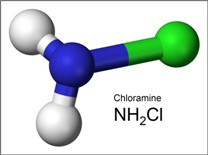
In the United States, Canada, and other first-world
countries, we are fortunate to have national and state regulations enacted to
protect our public water supplies. These
agencies, along with your local water provider, are tasked with delivering to the
public clean, disinfected water in order to prevent the spread of disease. The most common disinfectants used today are
chlorine and chloramine. While these
disinfectants are entirely necessary, even when used within federal regulation
guidelines, there still are serious health issues associated with routinely ingesting
such substances.
Chlorine is highly effective for the disinfection of water. However, challenges occur in the disinfection
process because chlorine can react with organic materials in the water,
especially from surface water sources. This
results in what is called “disinfection byproducts,” and these byproducts, such
as Trihalomethanes (TTHM), have been identified as #carcinogens and can lead to
serious illness.
Some water supply companies have made the switch from #chlorine
to chloramine. Chloramine (also referred
to as monochloramine) is a combination of chlorine and ammonia. While chloramine
is less likely to produce disinfection byproducts, it is a less effective
disinfectant than chlorine. It can also change
the chemical properties of water, which can foster corrosion and cause pipes to
leach lead and copper into the water.
Both chlorine and #chloramine are toxic to fish, aquatic
animals, reptiles, and amphibians. While
chlorine may dissipate from water if left to sit out for a few days, chloramine
cannot be removed in this manner.
Chloramine cannot be removed by either boiling or by the #distillation
process. In addition, chloramine vapors and disinfection byproducts can accumulate
in indoor air. The only effective way of
removing these disinfectants from your water is through point-of-use filtration
with a high quality carbon filter.
The Multipure family of water filtration systems reduces
chlorine and chloramine to the lowest possible levels, and these reductions are
tested and certified according to NSF/ANSI Standards. While many water filters on the market make
claims as to the reduction of disinfection chemicals and by-products, many are
not effective in reducing chloramine. You must insist on seeing #NSF testing and
certification of these claims. #Multipure
drinking water systems lead the industry in contaminant reduction, and this
includes the harsh chemicals used to disinfect your water.
|
 0 Comments 0 CommentsTweet |
Transmittable Viruses and PathogensFriday, October 17, 2014 - Posted by Water2Drink, in Health, Water Safety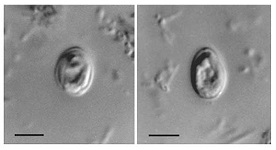
Cryptosporidium It’s impossible to ignore the news about the first-ever emergence
of the Ebola virus here in the United States.
Citizens are quite concerned with the potential to be infected with this
rare and deadly virus. While #Ebola is certainly a grave illness, at this time it is
unlikely that the majority of people in the U.S. will come into contact with
the virus. However, there are numerous
other non-viral, waterborne parasites that can infect all citizens, even within
a treated municipal water delivery system.
For example, the Cryptosporidium
pathogen can cause the diarrheal illness cryptosporidiosis. Cryptosporidium is not passed along by
insects, but is transmitted by hardy cysts that can be ingested and that result
in gastrointestinal infection and illness.
Cryptosporidium can survive
for long periods outside a host, and is resistant to common disinfectants
including chlorine-based disinfectants.
High concentrations of chlorine disinfection is required to inactivate #Cryptosporidium. Generally, the required levels of chlorine
preclude the use of this #disinfection method as a reliable method to control it
in drinking water.
Other microbial pathogens (microorganisms capable of causing
disease) such as Giardia, Entamoeba, and Toxoplasma can be transmitted by fecal
contamination of surface waters used as drinking water sources, or by other
exposures such as touching contaminated soil or eating unwashed fruits and
vegetables.
The good news is you can easily protect yourself. All #Multipure Water Filtration Systems have
been NSF tested and certified for 99.95 and over reduction percentage levels of
these waterborne microbial cysts. In
addition, a Multipure system will also reduce the chlorine-based disinfectants
that are used by municipal water treatment plants. You can check the reduction
levels of all contaminants on our Water2Drink website.
The Product Page for each water filtration system contains a link to the Performance Data Sheet which
contains that information. Use your
Multipure filtered water for drinking, washing foods, ice cubes, boiling
foods, or for any ingestible use. |
 0 Comments 0 CommentsTweet |
Are You Exposed to PCE?Friday, October 10, 2014 - Posted by Water2Drink, in Health, Water News, Water Safety
A recent article in The
Washington Post brings to light a new example of neurotoxin exposure in the
environment. Tetrachloroethylene, or PCE, was used by New England’s water
utilities to line the insides of water pipes in the late 1960’s. PCE has been linked to increased risk for
stillbirths and other pregnancy complications. PCE is widely used in the
dry cleaning industry also, so it may be of concern for many other citizens as
well. The toxin has been linked to
mental illness, breast cancer risks, and some birth defects.
Unfortunately, PCE was not only found in the New England
area. Contamination has been found on military
bases across the country as well, along with water systems in Pennsylvania and
California.
There is a simple solution to address this problem: use a Multipure Drinking Water System at your
sink or point-of-use water supply to filter your drinking water. Multipure filters are NSF tested and
certified under NSF/ANSI Standard 53 Health Effects to reduce the widest array
of water contaminants of health concern of any filter on the market, including
PCE. You can find a confirming Performance Data Sheet on our Water2Drink website that will
give you the list of all contaminants that are addressed by using a Multipure
water filter.
If you would like to learn more about PCE, the Environmental
Protection Agency has information on their website as well. Click here for more information about health
effects and the EPA’s drinking water regulations.
|
 1 Comments 1 CommentsTweet |
Small Community, Big ProblemSaturday, August 23, 2014 - Posted by Water2Drink, in Water News, Water Safety
Recently, an article came across our desk about the water
quality in the small community of Wake Forest, NC. The 100+ homes in the neighborhood must
contend with discolored water that often contains sediment as well.
According to neighbor Wendy Callahan, “Some days we’ll get
relatively clear water, but you just don’t know until you turn on the tap.” President Tom Roberts of the water provider,
Aqua North Carolina, calls it an “aesthetic issue” that is not health-based.
"We try to treat the most sufficient way we can,"
Roberts said. "A lot of times that's by adding a sequestrant, which is an
additive that keeps it in suspension so it's invisible to the customers."
Sequestrant? Invisible? We looked up “sequestrant” and it
does not look very appetizing. Chemical #sequestrants are often used in treatment projects to remove contaminants that adversely
affect taste, odor, and color of drinking water. They do not remove, reduce, or solve the problem;
sequestrants appear to just mask the underlying contamination.
Obviously, this is a small water treatment facility serving
just over 100 homes, much like many smaller communities and towns across the
nation. Typically, small community water
utilities are inspected at some regular interval, but they simply do not have
funding to provide the optimal water filtration solution for you, their
customer. Adding a Multipure Drinking Water Filtration System would provide a
buffer to help protect consumers from ingesting many of the “irregularities”
that occur between inspections and maintenance cycles.
|
 0 Comments 0 CommentsTweet |
The 411 on NSF 401Thursday, August 14, 2014 - Posted by Water2Drink, in Water News, Water Safety
If you have done any research on water filtration systems,
you most likely know that the highest quality systems not only rely on
Environmental Protection Agency (EPA) standards, but also are tested to, and
certified against, NSF International standards. While there are myriad
contaminants that are reduced or eliminated by a certified filter, you may not
know that currently there is no EPA standard for emerging contaminants in
drinking water.
What are emerging contaminants? They are chemicals being discovered that
previously have not been detected, or are being detected at significantly
different levels than previously acceptable.
These include #pharmaceuticals, personal care products, pathogens, #hormones, #antimicrobials, veterinary drugs and feed additives. These chemicals can accumulate in human
tissue or blood, and are associated with health effects such as endocrine
disruption. The EPA has not been able to
create drinking water standards for these emerging compounds, as only recently chemists
have been able to measure trace amounts of the #contaminants present in public
water supplies.
But now the issue has been identified and #NSF is working to
develop a testing standard for emerging contaminants. A recent issue of Scientific American describes the issue in depth.
The new testing standard is identified as NSF Standard 401: Drinking Water
Treatment Units – Emerging Compounds/Incidental Contaminants. Since
this is a new unpublished standard and testing protocols have not been
finalized, no drinking water filter system can honestly promote that they are
in compliance with the new standard, including Multipure’s. However, Dr. Andrew
Fenwick, PhD, of Multipure International is actively working on NSF standards
committees to help finalize testing protocols. #Multipure will continue to be
on the forefront of product testing and standards compliance certification when
the new NSF Standard 401 is published. |
 0 Comments 0 CommentsTweet |
Water, Water, Everywhere!Friday, August 1, 2014 - Posted by Water2Drink, in Water News, Water Safety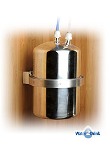
By now you have probably seen the news reports about the water
main break in Los Angeles, CA, on Wednesday, July 30th. TWENTY MILLION GALLONS were released into the
streets of the #UCLA campus. Sadly, those
20 million gallons of water were lost during the midst of California’s worst #drought in decades. What the headlines
didn’t shout was that the aging #watermain that burst was 93 years old. Warren G. Harding was inaugurated as the 29th
U.S. President in 1921 when that water line was laid and the U.S. formally
ended World War I in August of that same year.
That’s ancient! In fact, most of the pipes that supply drinking water across
the country were laid in during the first half of the 20th
century. For many cities, the greatest
population growth and urban expansion occurred from the late 1800’s into the
1920’s. As our water supply infrastructure
ages, ruptures like this will occur with increasing regularity. The concerning thing to note is that the
rupture occurred in the water line after the water left the treatment
facility. Why is this important to you?
Breaks like this happen all the time, anywhere between the
plant and our homes. There are 240,000
breaks a year, according to the National Association of Water Companies. These breaks can allow dirt and contaminants
into your #water supply after it has been treated but before it reaches your
home.
Fortunately, there is a solution. Citizens can protect themselves by using a
high quality “final barrier” point-of-use water filtration system like the
Multipure Aquaversa. The Aquaversa, with
its solid #carbon block filter technology, is considered to be the most
effective method in reducing a wide range of water contaminants of aesthetic
and health concern. To find out how to
protect your health and your family, contact #Water2Drink and we will help you determine
the right water filtration system for your needs. |
 0 Comments 0 CommentsTweet |
Three Reasons to Skip Bottled WaterFriday, July 11, 2014 - Posted by Water2Drink, in Water News, Products, Water Safety The bottled water industry has exploded over the last
decade. The effectiveness of the bottled
water marketing campaigns has led the general public to believe buying their
product is the safer, more convenient way to consume purified water. But you
can’t believe all the marketing hype. Thanks
to the Environmental Working Group (EWG), here are some reasons to skip bottled
water and find another solution. 1. 1. What’s in
the Bottle? No, not the contents, but within the plastic used to make the
bottle. The FDA has disclosed which chemicals are used to make PET plastic
(marked with a #1 code), but do you know how many chemicals may be leaching
into the water? An EWG investigation
found these plastics contain “dozens of chemical additives, manufacturing impurities
and breakdown byproducts – a total of more than 80 potential contaminants that
can leach into the water.” 2. 2. What’s in
the Water? In 2008, the EWG found 38 pollutants in 10 brands of bottled
water. The bottled water industry, unlike water utility companies, rarely
discloses the results of contamination testing on its product. Yet they claim that bottled water is as safe
as tap water. “Given the industry’s refusal to make available data to support
its claims, consumers have little reason to be confident in the purity of
bottled water,” says the EWG. 3. 3. Plastic
Pollution. As consumption continues
to rise, the U.S. Environmental Protection Agency estimates that only 29% of
plastic bottles were recycled in 2011. This leaves 71% of plastic pollution to pollute waterways,
clog landfills, and threaten marine life.
So what is the solution? Filter your tap water and use a
reusable bottle. There is a wide range
of water filtration products to fit every budget and each water concern. A Multipure solid carbon filter, tested and
certified to NSF/ANSI standards, provides consumers superior water filtration
to deliver healthier water. At Water2Drink.com, we can provide you with
affordable, effective alternatives to bottled water. Our Resource Center has product information,
performance data and warranty information to help you select the most effective
water filter to fit your needs. Call or visit us online today to explore the
hidden costs of bottled water. |
 0 Comments 0 CommentsTweet |
Making Your Drinking Water Safe in an EmergencyFriday, July 4, 2014 - Posted by Water2Drink, in Water News, Products, Water Safety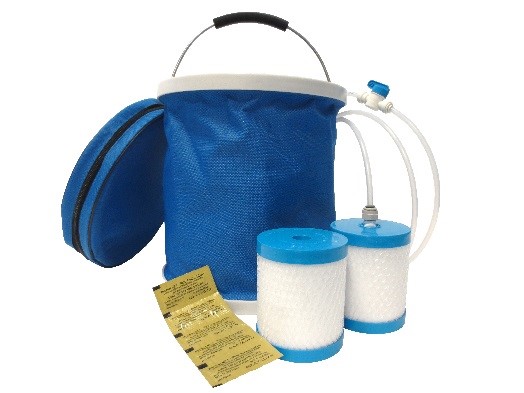
Oh, no! Your community just issued a boil water alert due to
a water main break, and the authorities don’t know how long it will last. What will
you do to protect your family?
If you own a Multipure Water Emergency Treatment (WET) System,
the answer is relatively simple: treat and filter your tap water to make it
safe to drink. The WET System comes with everything you will need to produce safe,
clean drinking water. Here’s how it works:
1. 1. Fill the collapsible bucket included in the WET
System with tap water to the designated level.
2. 2. Add the disinfection tablets that are included
in the WET system, stir until dissolved, and then let the water stand for a few
minutes.
3. 3. Screw the provided plastic fitting into one of
the two Multipure EF8 emergency carbon block filters included in the WET System.
4. 4. Attach to the fitting the plastic tubing provided
in the WET System, and make sure the shutoff valve on the plastic tubing is
closed.
5. 5. Place the bucket on a tabletop or other raised
surface and put the EF8 filter inside the bucket, letting the other end of the
plastic tubing extend well below the bucket.
6. 6. Place the open end of the plastic tubing into a
suitable container to collect filtered water.
7. 7. Let the filter soak for a few minutes and then
open the shutoff valve on the plastic tubing.
8. 8. Let gravity pressure do the rest. In very little
time, fresh clean water will begin flowing through the EF8 filter and out the plastic
tubing into the drinking water container.
9. 9. When the source water bucket is empty, refill
and repeat the process as often as needed until safe water service has been
restored.
The WET System becomes your backup drinking water source in
case of emergency. The Multipure WET System requires no electricity, hand
tools, or anything else except water. Everything you will need is included in
the kit.
How do you obtain a Multipure WET System? This product
currently is not offered for sale, however, it’s available for FREE when you
purchase a new Multipure
Drinking Water System for your home or office. Click here
for more information about this limited time offer, available from Water2Drink.com.
Prepare now, and be
ready when a water emergency strikes in your neighborhood!
|
 0 Comments 0 CommentsTweet |
Is Chlorine Good for Your Health?Wednesday, June 18, 2014 - Posted by Water2Drink, in Health, Water Safety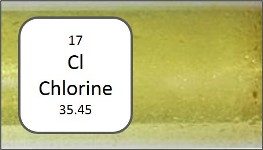
The
answer is both yes and no. There is little doubt that adding chlorine to public
drinking water supplies to serve as an affordable disinfectant has had the very
positive health effect of eliminating a host of water-borne diseases such as
cholera. Many people who have become accustomed to drinking tap water even
associate the smell of chlorine in their water with it being “safe” to drink.
The fact is that chlorine offers health benefits right up to the point where
you ingest it. But what then? The
chlorine in treated water is essentially bleach, and it’s unlikely that most
people would consider drinking bleach to be good for their health. Medical
studies have linked chlorine consumption and associated chlorine byproducts to
cancer, heart trouble, premature senility, hardening of the arteries, and a
host of other ills. And while the U.S. Environmental Protection Agency has
established “safe” levels of chlorine in drinking water supplies, most rational
people would prefer to consume none of it. So, what’s the answer?
Rather
than expect any governmental agency to intervene and change your water
treatment process in the near term, individuals can take matters into their own
hands and simply begin filtering their drinking water at the point of use.
Chlorine is fairly easy to filter out, while at the same time a variety of
other potential contaminants that may be present (e.g., cryptosporidium,
giardia, MTBE, lead, mercury, arsenic, asbestos, etc.) will be eliminated or
significantly reduced as well. The simplest and most cost-effective solution is
to filter water through a high quality compressed carbon block filter.
Would
you like to see a demonstration of how such a filter effectively strips
chlorine out of tap water?
Then
click on the link below to see a short 1-minute video on YouTube.com. Most swimming
pool owners are familiar with a chemical solution called OTO that is used to
test the concentration of chlorine in pool water – the darker the water color
after adding OTO, the more chlorine is present. The video shows a simple OTO
test of tap water and a comparison to water drawn from the same source but
pushed through a compressed carbon block drinking water filter.
|
 0 Comments 0 CommentsTweet |
The Final BarrierMonday, June 2, 2014 - Posted by Water2Drink, in Water News, Water Safety
You may
believe that the water coming out of your tap is safe to drink, especially if
you live in or near a metropolitan area with water supplied by a municipal
treatment facility. But it may not be as
safe as you think. There are
numerous potential points of failure between the treatment facility and your
water glass. The Water Quality
Association has provided information on how to Protect Your Family that describes
the “Final Barrier” concept.
The best way
to control the quality of your water is by using what is known as a Final
Barrier Solution, such as a quality drinking water filtration system. Installed at the point of use (typically,
your kitchen sink), a high-performance, low maintenance water filtration system
will provide you peace of mind. This is the #finalbarrier between the municipal
delivery system and your water glass.
But not all
water filtration systems are equal. The
water quality is improved only if you can identify the contaminants that are
present in your #water, and you have the ability to certify that these
contaminants are reduced or eliminated. The simplest way to provide such verification
is if the filter has been submitted for independent performance testing and
certification, such as that provided by NSF International.
The #Multipure line of drinking water filtration systems have all been NSF tested
and certified. In this era of
transparency, Water2Drink.com provides Product Performance information so you
can understand the product design and determine which filter is right for your
home.
You can
build your Final Barrier with information, education, and a certified Multipure
Water Filtration System from Water2Drink.
Please contact us if you need assistance in determining your needs.
|
 0 Comments 0 CommentsTweet |


